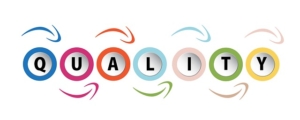Active Observation: Before and After Copywriting in Action
Study leads to more knowledge, but observation leads to wisdom.
This was the opening hook line by my current RMIT Copywriting students for their Group Project calling for less feasibility studies and more action on Solar Thermal Energy. I quote this line because it elegantly sums up the premise of this post: that one of the most valuable methods for learning and advancing your skills (in any endeavour) is through active observation. You look and you see and then you put your raised awareness into practice.
In this post, you will get to see the transformation of a writer-centred, toneless lecture into a reader-centred, tuneful dialogue. Note the words ‘reader-centred’ (know you’re reader), ‘tuneful’ (make your cop

y sing) and ‘dialogue’ (connect with your reader). In the process, you will discover the fine art of good writing that is in you too. You will discover that it is storytelling, something we do it every day in all types of mundane situations.
The following case study is a Press Release and I would like to thank the Australian Mathematical Sciences Institute for giving me permission to use extracts from their before and after drafts.
The problem of the traveling sales man is a famous riddle; it has brought hours of joyous torment to students for centuries. But what if your job was to solve a more complicated version of it and at the same time minimise environmental impacts?
For starters, the problem here is the problem itself. Most of us don’t know what the famous riddle is and we don’t find out soon enough to keep us engaged. On the contrary, the writer has introduced an idea — the famous riddle — and the reader is left wondering about the riddle while the writer hurtles on under the illusion that the reader is still with her — a sure sign of a lack of empathy with the reader.
Table of Contents
Observation #1: What’s the Story?
The key question to ask here is “what’s the story?” You’ve got to brainwash yourself into the habit of asking yourself that question with every piece that you write; even if you’re writing about elastic bands. And the answer must be something that will have your reader prick up their ears. We are story telling. And the story of this press release is not about a famous riddle, but an accidental mastermind. He is a young mathematics PhD candidate with no experience of the commercial world and yet solves their biggest problem.
We’ve got ourselves a very interesting character to drive the story. The other type of narrative is the plot-driven story that drives the character.
Observation #2: Show Don’t Tell
It’s the difference between a concrete, specific image versus vague, ambiguous reporting. Your job is to allow people to use their imagination. Then guide their imagination to where you want them to go, sentence by sentence. In this case study, the reader’s imagination got stuck on “famous riddle”, and so the story ended before it could begin.
How we addressed this problem is with more questions. Who was this young maths student? Where did he come from? How did he get involved in solving the riddle? What experience did he have in the first place? These are questions a reader would ask. An editor would ask. You must ask. The answers were nothing short of remarkable! The writer answered them verbally in a way that automatically made for great storytelling:
You’ve got your PhD student who has no industry experience. He’s all caught up in academia. He hasn’t applied his knowledge base to real world problems. And his experience in sales only goes as far as Ebay.
Observation #3: Speak Your Story
I had to type really fast to keep up with her (my classes are literally copywriting in action). Although she was working it out as she spoke it aloud, that opening line set the tone and rhythm and informed her of how to move the story forward. This speaking the story aloud also enables you to recognise your own voice. Very important! Your own voice and tonality is best accessed by externalising your sentences into sound. This also helps identify fake from authentic (our bullshit detector works best when words are heard).
Observation #4: Move Story Forward
You might ask, ‘how do you determine what detail is worth giving, and what is too much? My answer is, ‘give only details that move story forward in plot, and deepen it with meaning and value’. The following were details of our accidental mastermind relevant to the story:
- PhD student
- No industry experience
- Only sales experience is Ebay
In his case, relevance was the irrelevance to the problem he was asked to solve. Thus the ‘accidental mastermind’. So the first half of the first paragraph introduced our character with essential details that set him up. And the set-up’s sub-text suggests to us that this ordinary student is going to do something extraordinary.
Observation #5: Create Patterns of Expression
All this information is packaged neatly into a rhetorical device called a tetracolon – the rhythm of four:
- You’ve got your PhD student who has no industry experience.
- He’s all caught up in academia.
- He hasn’t applied his knowledge base to real world problems.
- And his experience in sales only goes as far as Ebay.
There are about 60 rhetorical devices and you can find them all on Virtual Salt. But for now, simply observe how you can neatly and economically package information into a shape the reader can easily take in.
Observation #5: Package Your Ideas
 Okay, so we got the writer to talk up a perfect set-up for the story. Now what? It’s only logical to ask the question your reader would be asking, ‘Of all people, why did they pick him?’ But use this question to tie in that ‘famous riddle’ idea and what it is. This way you package two ideas into one sentence that moves story along. In this case, to the substantiation paragraphs (where you explain, describe, give examples and quotes). Again the first half of the sentence was externalised, but this time by other participants in the class. They were asking on behalf of the reader. On your own, you must be your own inquisitor.
Okay, so we got the writer to talk up a perfect set-up for the story. Now what? It’s only logical to ask the question your reader would be asking, ‘Of all people, why did they pick him?’ But use this question to tie in that ‘famous riddle’ idea and what it is. This way you package two ideas into one sentence that moves story along. In this case, to the substantiation paragraphs (where you explain, describe, give examples and quotes). Again the first half of the sentence was externalised, but this time by other participants in the class. They were asking on behalf of the reader. On your own, you must be your own inquisitor.
So why does Visa Global, one of Australia’s largest privately owned global freight forwarding companies, approach him …
But only the writer knows the direction the question must lead to, which is:
… to solve the classic traveling salesman problem: how to travel from A to B in the least amount of time and energy?
You, as the writer, must guide the reader to where you want them to go. In this case, traveling from A to B in the least amount of time and energy. Which is the precursor to the reducing carbon footprint outcome of the story as unfolded in the second paragraph. You’ll see that both the before and after drafts of the second paragraph carry much the same information. The difference is that the Before version flat-lines, and the After version has life breathed into the dead facts.
Observation #6: Bring Dead Facts to Life
In this case, our main character, the accidental mastermind, helped raise the dead. Of course, this means a little research into our main character in which we learn how ‘tricky’ and ‘fun’ it is for him to crunch numbers.
Observation #7: Make it Your Business to Research
You too may be under the impression that a writer is so well endowed with imagination that they can think up story and sentence ideas just by thinking. Wrong! The stories and ideas are out there in the world more so than inside your head. The writer is an observer of life. Through observation, the writer sees things ‘ordinary’ people don’t see. And then writes his or her observations so that the rest of us can see them too.
Please leave a comment because I am interested in your take-away from this post.
About the Author

Nicolas Di Tempora is an editor, teacher and professional copywriter based in bayside Melbourne, Australia, where he runs his live online copywriting in action school . When he’s not practising his craft he’s teaching others the strategic and creative processes of properly practiced copywriting. This he has adapted in his highly entertaining and insightful book, Copywriting in Action: From Concept to Completion, in which he and his students demonstrate the art and science of writing clear, concise and compelling copy.
Join me on copywritinginaction.com.au/copywritingblog/




Test question #2: Now, you have an art director breathing down your neck as you are writing this for print instead of online. Tell the story in the same number of lines as the example prior to rewrite. You cannot have any more space; they have photos and other items for the ad. I also cut my teeth in radio, writing 40-second 30-second spots and 70-second 60-second spots. (remember when clients insisted you say their phone number three times in the ad? Even though most people were driving at the time?)
Been there many times. Great piece, though.
Even with 30+ years experience copywriting, I learn something every time I read these threads. Excellent and informative. G